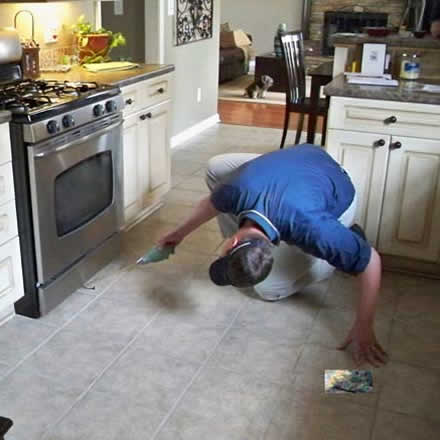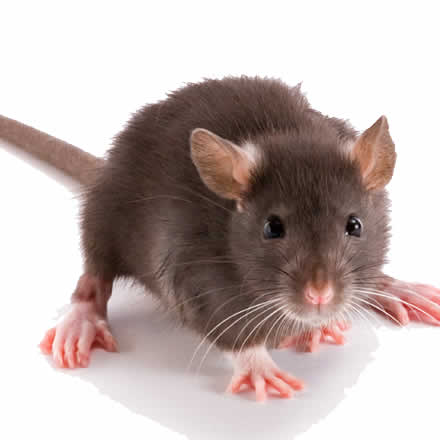Rodent infestation and treatment
Every pest control management starts with an inspection. Doing a thorough inspection is an important step before conducting any pest control. We advise you to inspect your property and consult our experts regarding your findings. You will need the following when conducting a pest inspection:
- Strong torch (preferably a backup torch as well)
- Notebook (Write down your notes.)
- Digital camera
- UV light for detecting urine stains
How do professionals handle rats and mice?
Rats may not be interested in grain-based baits you use when other food sources are in your home. If this is the case, you will need to rely more heavily on using traps, glue boards, proofing, or removing food sources. Professionals will need to locate the strategic spots where they should build bait stations.
Mice have omnivorous feeding habits and eat in short intervals at many different locations. The feeding habits of mice make it easier for professionals to stop an infestation by either using rodenticides or mechanical means.
At Masters Pest Control Sydney, our pest control experts understand rodent behaviours to provide you with the most effective pest control solution.
Tell us your problem
FREE QUOTE
Rodent Pest Control
There are numerous reasons why rodents are considered pests and in most cases. Here are some of them:
- Rodents are disease carriers
- Food consumption and contamination – rodents are dangerous to people because they have a nasty habit of eating our food. If that weren't enough, they would contaminate it by leaving their droppings, urine and hair.
- Physical damage – rodents need to gnaw constantly as they need to keep their incisor teeth growing too long. They can gnaw food containers or make nesting sites. Their gnawing can cause fire and short circuits when they gnaw at electrical cables. Additionally, rodents are known to destroy cartons and packed food in warehouses or storage facilities.
- Fear – it is completely normal for people to feel scared when they come across rodents. However, some people are much more sensitive than others.
Signs that you have a rodent infestation
During an inspection, you are looking for signs of rodent activity such as:
- Live (or dead) rodents
- Droppings – The texture, the size, the shape and the quantity can also help you during an inspection. If they are shiny, black and gleaming, then they are definitely fresh. You can also identify species from their droppings but be warned that the differences between roof rat and Norway rat droppings are unclear.
- Tracks – Look for footprints and tail marks. Sometimes, dusting flour lightly over the floor is enough. You'll easily detect marks the next morning.
- Smear marks (also known as “rub marks” or “grease marks”) – these are made by rodents when they come in contact with some hard surface over a period of time. They can be found around entry points and indicate locations that you need to seal.
- Gnaw marks are straightforward to notice and usually found where rodents have chewed through materials like timber or cardboard to gain access to food and nesting sites. Rodents also gnaw to keep their incisor teeth at a manageable length.
- Burrows – usually made by Norway rats or mice and roof rats.
- Nests – these are hard to find because they may be hidden away in roof voids or other obscure areas. Mice nests are easier to locate.
- Sounds – you can normally hear it in the evening or dawn because, at that time, rodents come out to play.
- Smell – rodents have a characteristic odour and cannot be mistaken for anything else. This odour is a bit sweet and lingers even after the rodents go away.
- Signs of damage and food consumption – rodents are big eaters, and they eat around 10% of their total body weight each day. They destroy much more in the process. Look out for damaged packaging or boxes.
- Urine stains – these stains cannot be seen with the naked eye. You'll need to use a UV light to find them.


Rodents Pest Control Sydney
Identifying Rodents
Fortunately for us, we do not work in Central America. Why? If we lived there, our job would be to deal with the largest rodent globally, Capybara, which can grow up to 50 kilograms! There are as many as 2000 different pest rodent species globally, and most of them are small enough to be a food source for many carnivorous animals. Because of the large number of threats they face, they become sexually active at a very young age, have concise gestation periods, and produce large litters. These factors make rodents a pest that can quickly spread invade every building or house.
All rodents found in Australia belong to the family Muridae, and three pest species of this family belong to the subfamily Murinae. In Australia, there are approximately 60 native species. Some of them are well-known like Water Rat, Stick-nest Rat and Bush Rat. These native species, such as bush rats and various species of mice, can be often found in backyards and can be quickly identified by locals.
The Three Most Common Rodents in Sydney
Rattusrattus (Roof Rat)
- Commonly known as a roof rat, black rat, fruit rat, tree rat, ship rat, and Alexandrine rat.
- The eyes and ears of this rat are relatively large, and its colour can be black to light brown.
- Each year, this rodent can produce up to 6 litters of 5 to 10 babies.
- This rodent is common around farms (especially poultry farms), waste disposal areas, food warehouses, stables and in older parts of cities. They can also be found in residential areas.
- They mostly eat fruits and vegetables but will also consume any human food.
- It can nest in a roof void, a treetop, boxes stacked on pallets or inside wall installations.
- Roof rats are extremely agile and can climb trees and other vertical structures with great ease.
Mus domesticus (or Mus musculus or Mus musculus domesticus)
- Also called house mouse
- They have slender bodies, pointed noses, and fairly large ears. Their fur is usually brown or grey.
- They can produce 6-10 litters annually (with 5-6 offspring per litter).
- House mice can be found worldwide and are one of the world's most successful living mammals.
- They do not live only in domestic dwellings. This species may live either indoors or outdoors and usually comes inside to avoid cold weather.
- Because of their small bodies, they can easily crawl into small holes or crevices. There's a saying that “if you can stick a pencil through a hole, then a mouse can surely follow”.
- They can be found in roof voids, wall voids, inside furniture or cupboards, pallets of stock, or expansion joints.
Rattusnorvegicus
- Also called Norway rat, white rat, sewer rat, brown rat or laboratory rat.
- If the roof rat is the “acrobat", then the Norway rat is the “strong rat”.
- Norway rats are stocky and have scruffy brown fur, short ears, and small eyes. Their tails are short and thick.
- It can have a combined head and body length of 80-255 mm and a tail length of 150mm-215mm. Its weight is usually between 200g and 400g.
- This rat species is a prolific breeder and can have 5-6 litters of up to 18 offsprings annually.
- They are not native to Australia. These rats came via ships and can now be found around major coastal cities and ports or nearby regions.
- They mostly eat cereals, meat, and fish. They also need access to water.
- They are also known to infest poultry farm. Norway rats eat eggs, dead chickens and poultry pellets.
Rats and Mice Behaviour
If we say that rats are “cautious avoiders”, then mice are “curious investigators”, and they can explore a new environment much more rapidly than any rat species. Some people say that rats are “neophobic.” What that means is that they have this “fear of new objects in the environment”. Rats tend to avoid traps and bait stations for a few days until they become accustomed to their presence. That's why strategic pest control is a must. When they do not have food sources, they may consume baits on the first night if the bait is palatable. Pest controllers say that neophobia is why rodents may not easily consume baits you can easily buy today.
Sydney's #1 Rodent Removal Specialist
Here are some basic things that you should remember:
- Always conduct a detailed inspection before doing anything else.
- Determine whether to use non-chemical or chemical rodent control measures.
- Using bait stations may require multiple visits.
- Do not rely on just one product. Ask your pest exterminator about their pest control plan.
- Try to “think like a rat” - ask yourself where they live and what they eat?
Rodent Pest Controller
Pest control is what we do best. We are professionally trained, insured and licensed in all areas of residential and commercial pest control. When you need an honest, friendly and reliable pest exterminator expert, ask for Robert from Masters Pest Control Sydney.
- We provide a warranty on all pest removal services.
- We have unique pet and child-friendly pest control services.
- We offer our services Sydney-wide.
- Full compliance and documentation
- 100% customer satisfaction!
We can help you get rid of common pests such as ants, bed bugs, cockroaches, spiders and termites.


